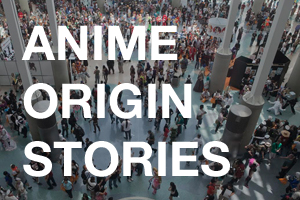 1. Costumes
1. Costumes
I admired the women the most. Whether from discipline or dedication to their historical characters, they didn’t seem to mind the heat. Though it was 100 degrees with high humidity, they were calmly perched on folding stools, knitting or lightly fanning themselves while wearing full, ankle length dresses.
I knew the heavy cotton of their gowns was just the beginning of the uniform. Underneath were layers of white linen: hoop skirt and pantaloons and bloomers and corsets, not to mention knee length striped stockings and boots. One woman had stripped to her corset and full body chemise. Somehow, she looked more nude than all of us visitors wearing tank tops.
 I knew this much about their clothing since I was a reenactor myself. In college, I got the opportunity to camp with the 3rd US Infantry, a union troop. I wore an ill-fitting borrowed camp dress (preserved in a photo so unflattering I won’t post it and you’ll have to visit this link instead) with what felt like two extra outfits underneath to the Battle of New Market reenactment. It was late spring and comfortable. I can only imagine what kind of discipline you’d need in this heat.
I knew this much about their clothing since I was a reenactor myself. In college, I got the opportunity to camp with the 3rd US Infantry, a union troop. I wore an ill-fitting borrowed camp dress (preserved in a photo so unflattering I won’t post it and you’ll have to visit this link instead) with what felt like two extra outfits underneath to the Battle of New Market reenactment. It was late spring and comfortable. I can only imagine what kind of discipline you’d need in this heat.
Though I sympathized with the women, the men weren’t much better off. Since the Battle of Manassas was the first battle of the war, it was accurate for everyone to be in full uniform, up to the thick, woolen army jackets.
2. Dedication to canon
Accuracy is the first tenet of Civil War reenacting. I remember sitting around the fire with the 3rd US while some of the reenactors poked fun at Renaissance Fair revelers.
“Look at me in my fairy wings, I look like I’m from the Middle Ages,” one soldier mocked. (It’s also interesting to note that the Renaissance Fair diehards I’ve spoken to don’t think much of Civil War reenactors either — they’re “no fun.”)
Reenactors are sticklers for detail. Even in the heat, very few altered their outfits.
“What a pretty dress ruined by those flip flops,” a colonel on his horse called to a woman walking beside him, bonnet on and basket in hand. “And are your nails that pink naturally?” he continued to the first woman’s companion, joking about her anachronistic nailpolish.
After the first day of the reenactment, during which several soldiers were treated for heat exhaustion, a few liberties were taken. Women in camp dresses carried ice cubes and water to the troops. Fallen soldiers came back to life and crawled off the battlefield to cool down in the shade. One corporal poured water into his hat for his horse to drink noisily out of. Actually, that may have been an accurate detail.
3. Acceptance
The battle endured for three hours, after which the Confederate troops prevailed, just like they had 150 years ago. There were cheers in the stands whenever Stonewall Jackson or Robert E. Lee, both present, rode by. White parents bought their children Confederate uniform caps as souvenirs.
I made a point to stop and interview any black female reenactors I saw. I hadn’t seen any at the Battle of New Market. First I met Elizabeth Keckley, a White House slave. Actually, this was a professional reenactor named Lillian Garland who felt a strong dedication to her character. In fact, she’d found 32 similarities between them, from their mixed race status to even their husbands’ names. Lillian’s husband was fighting on the Union side as we talked. Here she is with her freedom papers.
Next I spoke with an Ohio school teacher (in actuality, an Ohio paralegal), whose trip to petition in Washington had been delayed by the battle. She’s the woman on the right in the second photo of this post. She said she’d been reenacting since 1980 when she had joined a sizeable community of black reenactors and history buffs.
“But now, I’m getting old and the kids just aren’t interested,” she said.
We talked about the fact that most reenactors prefer to fight for the South. I suggested that maybe they’re hoping to win this time.
“That’s a good one,” she said, gasping from either laughter or heat. “Maybe they’ll win this time.”
However, she didn’t know any black reenactors for the Confederacy.
I was not so strong as the school teacher, so I made my way to a cooling tent, shaded with a big air conditioning unit inside. On the way, I met Miss Confederacy.
Miss Confederacy is from Kentucky. She’s in college studying to be a nurse. She said she’d love to major in history, but she doesn’t know what she’d do for a living. Her mother sewed the dress she’s wearing.
I asked her if she had friends on the “wrong side” of the war, as Confederate reenactors sometimes call it. She looked nervous, like she knew what I really wanted to ask.
“Once at the beginning of the reenactment, I came over to visit them at their camp. They joked that they should keep me there and let the rebels know they were holding Miss Confederacy for ransom,” she said, smiling.
As with the school teacher, I was too hot to even take out my notepad and get down her name. A Google Search for “Miss Confederacy” brings up articles about Jefferson Davis and the KKK and not much about pageants.
4. Outsider appeal
By this point I knew something was wrong with me. My vision was blurred and so were the photos I was taking. I felt drunk and everything sounded funny. I’d soon realize I was just very dehydrated. Luckily, I was not one of the many people who got heat stroke. A steady stream of ambulances drove over the battlegrounds to aid the unlucky ones.
I stumbled into line at a concession stand to get a lemonade. Standing in front of me was a man with a wet towel around his neck, listening to a tape recorder. I knew he was a reporter.
“How is your story going?” I asked.
“Not sure where it’s going yet,” he replied.
He was with the New York Post. I told him I was with nobody, but I am a journalist too so I like to ask questions. I told him about how I wanted to talk to black female reenactors.
“For me, talking to people is the worst part,” he said. I imagined his stories to be full of scenery and observation. I told him I used to be a reenactor, and I found it much easier to ask questions when I was wearing the same clothes as the people I wanted to talk to.
“Have you noticed that the TV reporters here are only looking at the most beautiful and weirdest people they can find?” he said. “I saw the Channel 7 guy interview the most gorgeous southern belle followed by the most scraggly bearded soldier.”
I thought about how TV media covered Comic-Con, focusing on the most scantily clad cosplayers and the most greasy comic collectors.
“Yeah,” I said. “What are people going to think?”
Discover more from Otaku Journalist
Subscribe to get the latest posts sent to your email.










7 Comments.
Fascinating post, Lauren. REALLY. Loved reading it!
@Charles, thanks for reading! I’m trying out a slightly different writing style these days.
Being Canadian, we don’t have any war renactments as far as I know. So I am always finding people who do things like that and LARPing, very interesting. I cosplay but I never really get to into the character other then for photos. I dont know if I could keep in character for a whole day or so.
I’m liking the different articles. Keep up the good work. You’ve kinda made me interested in at least going to a Civil War reinactment someday.
@Patrick, believe it or not, the American Civil War Reenactment Society is located in Ontario! http://www.acwhrs.com/
I have the same problem with cosplay. I feel silly when I try to act in character. Also, the unwanted hugs — you never get those as a Civil War reenactor. Perhaps that is why I haven’t cosplayed for a while.
Very interesting, I have a friend who is both a Civil War reenactment and anime guy, I’ve never noticed the parallels, but I can definitely see them having spent a lot of time around Civil War history buffs. Any how Im going having to show this post.
The day of the reenactment was SO hot, I’m surprised you made it out there! I felt so bad for all of the reenactors wearing their wool uniforms and carrying all of their equipment around on the 100+ day. As a resident of Manassas, I was quite sad that the weather was so hot and a lot less people came for the sesquicentennial than organizers thought. They had been preparing for years. I was not able to make it to the reenactment, but I’m sure it was awesome! I could hear the cannonfire from my house a couple of miles away! I was at least able to go to the parade and to the encampment at the Manassas Museum.
All of my friends who are reenactors are Confederates-all of them seem to think it is way more fun to be on the rebel side. I guess I would have to ask a union reenactor for their opinion, it would be interesting to find out!
It’s funny what typing “Miss Confederacy” into Google will bring up, like you said, it brings up photos of past winners and the KKK, but I was surprised to see this picture and article show up. :)
Loved reading what you had to say about Manassas and glad you had fun. :)
I wouldn’t be surprised if a lot of people got dehydrated that weekend, I think I had a few moments as well where I wasn’t feeling well.
Oh, and though my friends tried their hardest to end the war by holding me hostage, it was all in vain. lol
Emily Brooks
Miss Confederacy 2011.